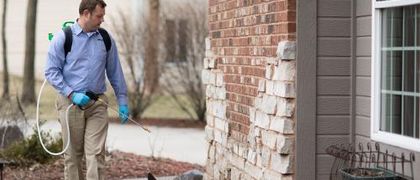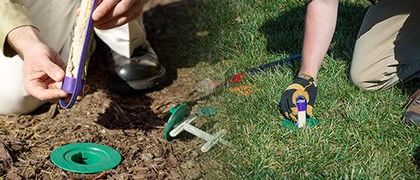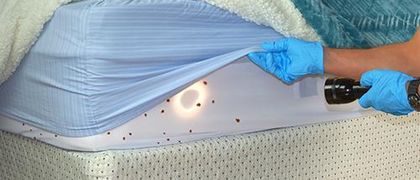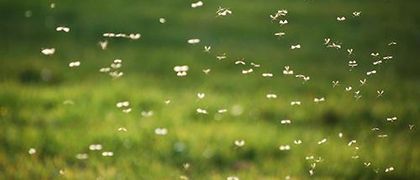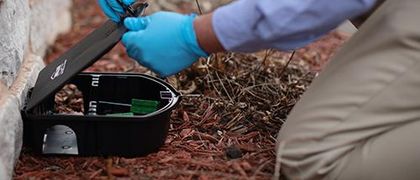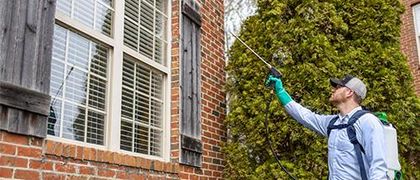7 Things You Need to Know About the Brown Recluse Spider
Spiders are an important part of the ecological system. These multi-legged creatures eat other spiders and insects that you probably don’t want crawling around. But some spiders, regardless of their diet, are dangerous to humans as well as pets, and should be destroyed if they have taken up residence in your home.
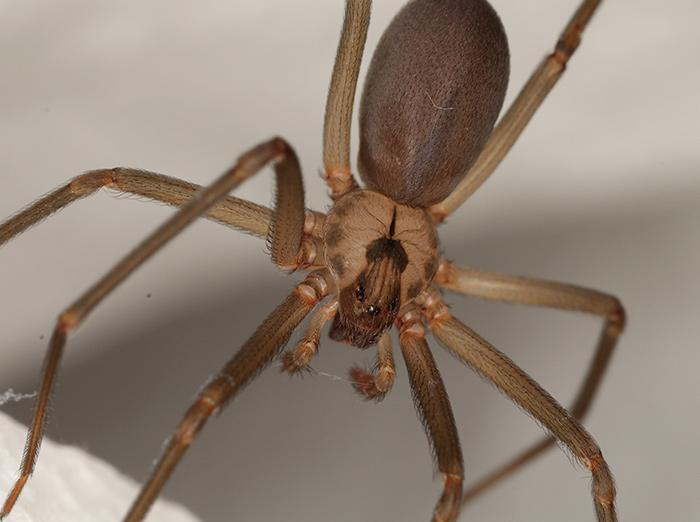
What does a brown recluse look like?
The brown recluse is an interesting arachnid with some very unusual features. The brown recluse is, well, brown, but perhaps the best way to confirm its identity is through its signature violin-shaped marking on its body. This marking isn’t always the exact shape of a violin but it will be a slightly darker shade of brown than the rest of the body. If there are color variations other than brown, or if its legs are a darker brown than its body, it’s not a brown recluse. While some spiders have “spine” markings on their legs, the brown recluse has several fine hairs. The width of a brown recluse body is about ½ an inch.
Interestingly, this spider has only six eyes, unlike most spiders that have eight.
Are there other spiders that look like a brown recluse?
Yes, there are four spiders that are commonly mistaken for the brown recluse:
- Southern House Spider- most commonly found in Florida, these spiders don't hide out in the same areas as the brown recluse and they're not known to be dangerous.
- Spitting Spider- not dangerous to humans, these spiders lack the violin markings the brown recluse has.
- Funnel Weavers- they weave a funnel-shaped web, often out in the open, but have a variety of colors on their body versus the single color of the brown recluse.
- Orb weavers- common in Kentucky, like funnel weavers they have a variety of colors on their body.
What attracts brown recluse spiders to your home?
There are a few ways your home can be attractive to the brown recluse: the biggest factor is if there's a place to hide and food to eat. Additionally, any bug or animal will enter your home if it has these things and if your home has gaps and cracks that haven't been taken care of, your home may even be more susceptible to a brown recluse invasion.
Where do brown recluse spiders live?
There are several good hiding spots for a brown recluse:
- Overgrown vegetation surrounds your home
- Your home has a woodpile outdoors (or, even indoors!)
- There's construction going on around your home and materials have been left in your yard.
- Interior clutter inside your home, especially in closets, attics, basements, and other dark, still places.
What does the brown recluse spider eat?
The brown recluse is a hunter, plain and simple, and likes to eat other small bugs. For this reason, it's important to have an ongoing pest control plan in place to keep these invaders out of your home. For more information on how a pest control plan can help you, give our team a shout today.
Are brown recluse spiders dangerous to humans?
The brown recluse spider can be dangerous to humans. The brown recluse is an unusual arachnid, with many quirks and characteristics you need to know about. They are rumored to be one of the most dangerous house spiders around. And while their bite has proven to be damaging for skin tissue, it has not led to any fatalities.
Is the brown recluse poisonous?
The brown recluse is not poisonous, it's actually considered venomous. While the terms both refer to toxic chemicals, the difference is all in the delivery. Poison works through touch, ingestion, or inhalation whereas venom is injected directly into the wound.
The venom that a brown recluse possesses is actually several times more poisonous than several venomous snakes. Lucky for humans, its tiny fangs aren’t capable of injecting the same amount of poison that a snake can. In fact, the brown recluse has smaller fangs than most other spiders. Nonetheless, it is still entirely capable of biting a human and injecting its venom.
What are the long-term effects of a brown recluse spider bite?
While painful, there typically aren't any long-term effects from a recluse spider bite in healthy adults. Most bites will resolve themselves within a week, though if you believe you have been bitten by a brown recluse spider, see a doctor immediately and try to catch the spider if possible. In a small minority of cases, more severe complications can occur.
Do I need to see a doctor for a brown recluse spider bite?
A small subset of bites can become necrotic, meaning the affected tissue will die and slowly begin to decompose. This can cause secondary complications. While exceedingly rare, it's always important to see a doctor if you believe you've been bitten by a brown recluse.
How can I get rid of brown recluse spiders?
Since moving around in your sleep would be considered an act of provocation by a brown recluse, it is imperative that you gear up, so to speak if you plan to handle one. Be sure to don full-length pants, a long-sleeved shirt, boots, and gloves.
Identify any potential spots in your home where they might be living. The brown recluse prefers to live indoors but can survive outside if necessary. Dark places like attics, crawl spaces, garages, and heating ducts are common abodes. Additionally, the brown recluse spider may take up residence behind baseboards, closets, and crevices near the bed. Outdoor locations include outbuildings and woodpiles.
Ensuring that traps are out of reach for children and pets, place glue boards or sticky cards in these areas and check the traps daily. While these cards are effective for trapping, they don’t typically destroy an infestation.
Insecticidal dust and sprays are far more effective for controlling a large population of brown recluse spiders. Protective gear such as safety masks and goggles are highly recommended. Use these products to spray or puff into identified cracks and crevices where they are living, as well as along the base of your home’s foundation.
Not comfortable getting rid of a recluse infestation on your own? Give Miller a call today at 515-305-3656! Our Midwest pest control company, Miller Pest & Termite recognizes that all homes and infestations are different; we will customize a plan for your particular situation and get rid of these dangerous pests quickly.
Get Help Now!

